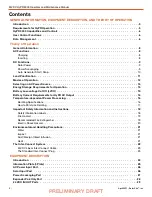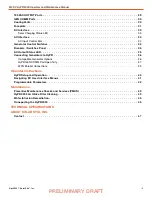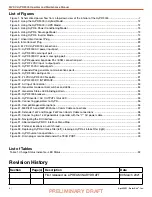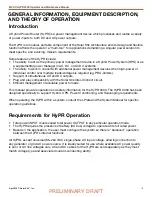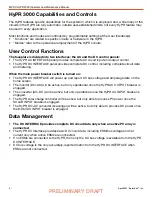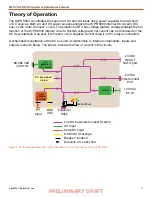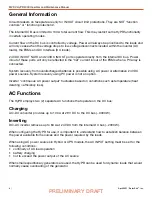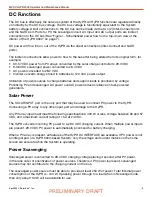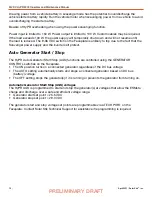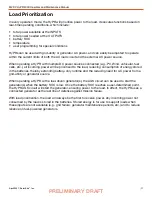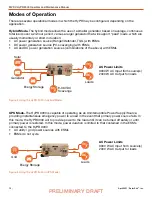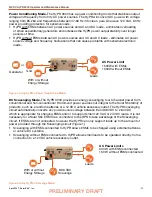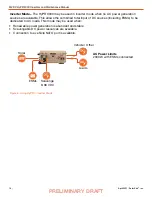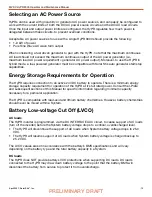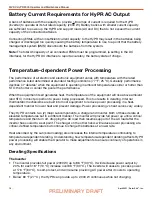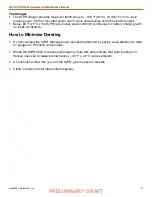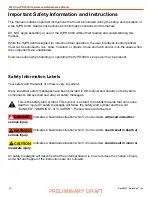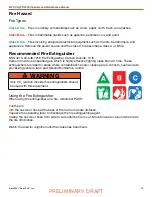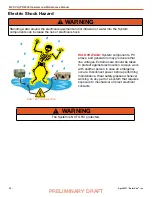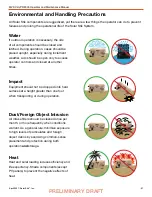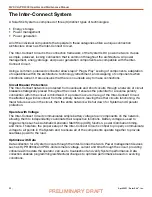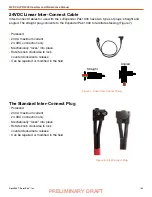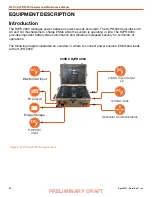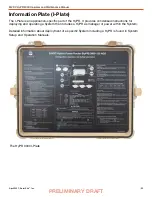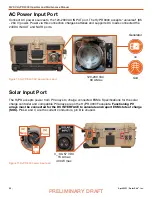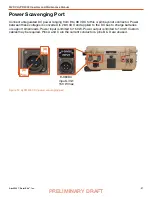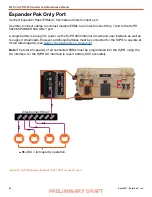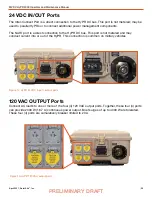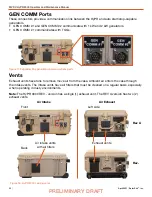
|
15
April 2021
|
Solar Stik
®
, Inc.
PRELIMINARY DRAFT
24VDC HyPR 3000 Operator and Maintenance Manual
Selecting an AC Power Source
HyPRs can be used with grid-utility or generator AC power sources, and can easily be configured to
work with the current limits of both the DC/AC power source circuits and the DC/AC load circuits.
Once the input and output power limits are configured, the HyPR regulates how much power is
delegated between these circuits, to prevent overload conditions.
Acceptable AC power sources for use with a single HyPR 3000 should provide the following:
• 1–3 kW of power
• Pure Sine Wave AC wave form output
When considering a fuel driven generator to pair with the HyPR, note that the maximum continuous
AC load should not exceed the maximum continuous output of the AC power generator (i.e.,
maximum load AC power requirement ≤ generator AC power output). Moreover, to use the HyPR in
hybrid mode, a fuel-powered generator must be compatible with Solar Stik auto generator start/stop
capabilities.
Energy Storage Requirements for Operation
The HyPR requires connection to an active 24 VDC battery to operate. There is a minimum energy
storage capacity requirement for operation of the HyPR at it’s full rated power. Consult the I-Plate
and subsequent sections of this Manual for specific information regarding minimum capacity
necessary for a particular application.
The HyPR is compatible with lead-acid and lithium battery chemistries. However, battery chemistries
should never be mixed within a System.
Battery Low-voltage Cut Off (LVCO)
AC loads
The HyPR inverter is programmed, via the DC INTERFACE AUX circuit, to cease support of AC loads
(turn off the inverter) before the System battery voltage drops to a critical, overdischarged level.
• The HyPR will discontinue the support of AC loads when System battery voltage drops to 25.0
VDC.
• The HyPR will resume support of AC loads when System battery voltage is charged backup to
25.2 VDC.
The LVCO values are set in accordance with the battery’s BMS specifications and will vary
depending on the battery type and the total battery capacity in a System.
DC loads
The HyPR does NOT provide battery LVCO protections when supporting DC loads. DC loads
connected to the HyPR may draw down battery voltage to the point that the battery BMS will
disconnect the battery from service to protect it from overdischarge.


